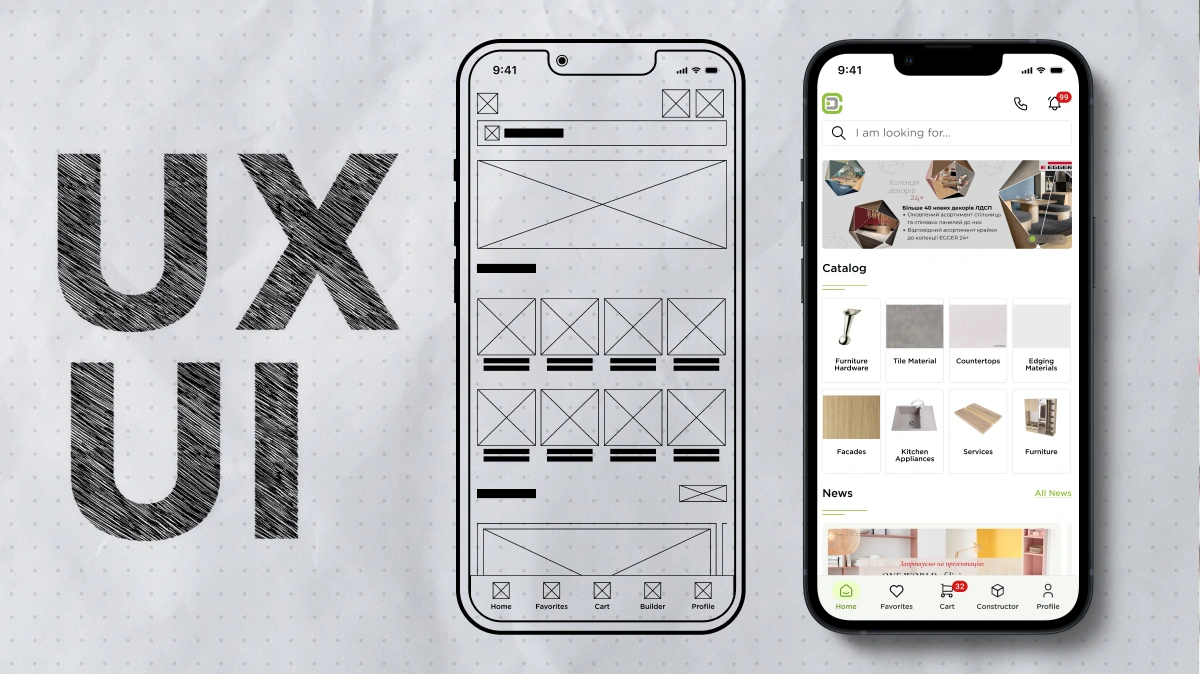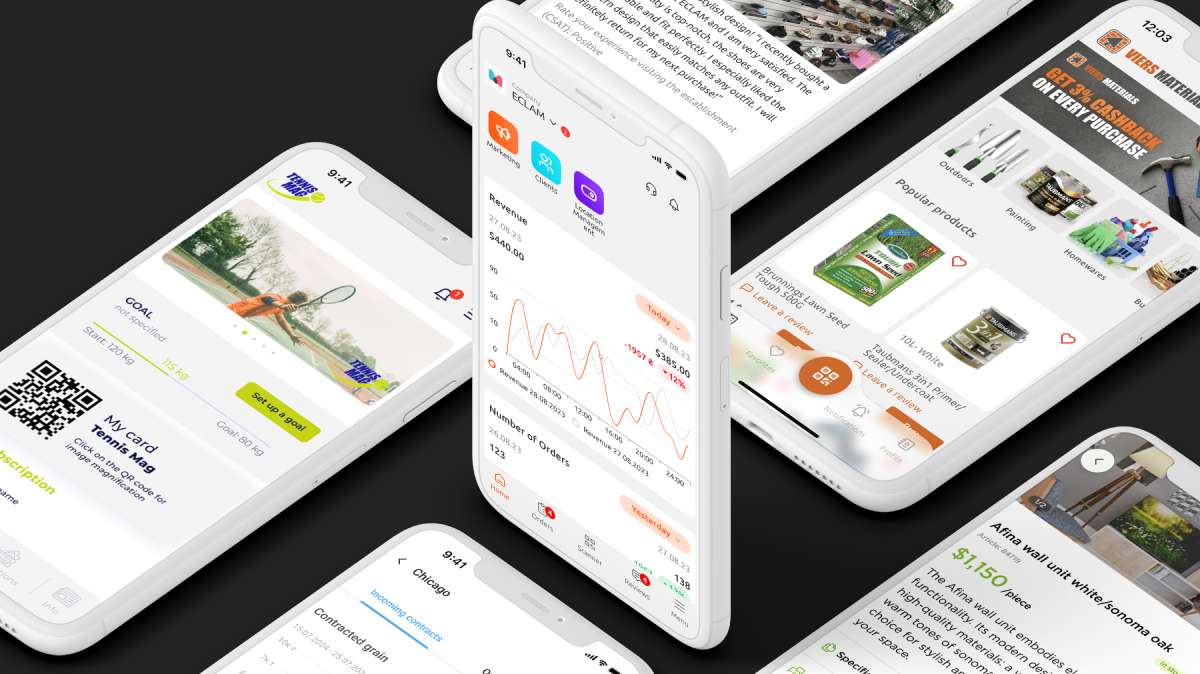
Mobile application development has become an important step in the business strategy of many companies seeking to expand their audience and facilitate customer interaction. However, even the best functionality of a mobile application can be useless if its design is not clear and convenient for users. This is the task of UX/UI design - to create an interface that will ensure not only the efficient operation of the application, but also a pleasant experience for the user.
What is UX/UI design and why is it important?
UX (User Experience) is the user's experience when interacting with a product. It covers all aspects, from ease of use to the overall emotional response of the user.
UI (User Interface) is the user interface, i.e. all the elements with which the user interacts: buttons, menus, fonts, colors, etc.
It is important to understand that UX and UI design are closely related, as an effective interface without a good user experience is unlikely to ensure the success of the application, and vice versa.
How does UX/UI design affect the success of a mobile app?
1. First impressions of the user
The first few seconds when a user opens an app are critical for them to decide to stay. A good design can immediately generate interest and trust, while a poorly thought-out interface can make the user leave the app without using it to its fullest potential.
2. Ease of navigation
An intuitive interface helps users easily find the function or information they need without additional effort. If a mobile app has a complicated navigation, it can lead to frustration and reduced user engagement.
3. Visual appeal
Design aesthetics play an important role in the user's interaction with the app. Users prefer apps that have an attractive and professional design. Visual harmony helps to create a positive emotional response and stimulates the user to interact.
4. Speed and performance
Although the design may look very beautiful, it should also be optimized for fast performance. Users don't tolerate delays or bugs, so it's important to ensure that the app is fast and that the design doesn't become an obstacle to fast and efficient interaction.
5. Design adaptability
Mobile applications are used on different devices with different screen sizes. Therefore, it is important that the design is responsive and displays correctly on all types of gadgets. Mobile UX/UI design should ensure that the application looks the same when used on a smartphone, tablet, or other device.
How to create an effective UX/UI design for a mobile application?
1. Research the target audience
Before you start designing, you need to conduct user research. This will allow you to understand what is important to your target audience, what features they expect to see, and how they interact with similar applications. Thanks to this approach, you can create a more personalized and useful design.
2. Create prototypes and wireframes
Prototypes and wireframes help to visualize the concept of an application before it is developed. This allows you to identify potential problems in the interface and correct them at the design stage, saving time and resources in the future.
3. Choose colors and fonts
Colors and fonts are important design elements that can significantly affect the user's perception of the app. The choice of colors should be harmonious and consistent with your company's brand. Fonts should be readable on different screens and not create obstacles to the convenient use of the application.
4. Responsive design
Given the variety of devices, it is important that your mobile app is responsive. This will allow users to get the best experience regardless of the screen size of their device.
5. Testing and feedback
You should regularly test your UX/UI design at different stages of development. Involving users in testing will help you get valuable feedback on design or functionality issues that may not be obvious to developers.
Psychology of UX/UI design
User psychology has a great influence on interface design. Understanding how people perceive information, how they react to colors, and the arrangement of elements on the screen can significantly increase the effectiveness of a mobile application. For example, the psychology of colors can be used to increase conversion rates or to create the right mood for the user.
SEO optimization and UX/UI design
One of the most important aspects is the combination of SEO optimization and UX/UI design. A good design should not only be user-friendly, but also ensure fast app loading, clear display of content, and proper interaction with search engines.
How to engage users with UX/UI design?
1. Personalization
The ability to personalize the interface can significantly increase user engagement. When users can customize the app to their preferences, they feel more comfortable and will use the app more often.
2. Simplicity and convenience
In fact, simplicity is one of the key principles in UX/UI design. Users appreciate minimalism, clear navigation, and quick access to the most important functions of the app. An excessive number of elements on the screen or complicated menus can scare users away.
3. Use animations and micro-interactions
Micro-interactions, such as smooth animations when buttons are pressed or the screen changes, make the interaction with the app more pleasant and intuitive. They create the feeling that the app “responds” to the user and reacts to their actions.
4. High speed of operation
You need to ensure that the app works quickly and smoothly. Users don't like to wait, so speed is an important component of UX/UI design.
UX/UI design plays an extremely important role in the development of mobile applications. Not only the usability of the application, but also its popularity among users depends on how well the design is implemented. Attracting users through effective and attractive design is key to the success of any mobile application.
Investing in UX/UI design can be a key factor in ensuring the competitiveness and popularity of your product in the mobile app market.



